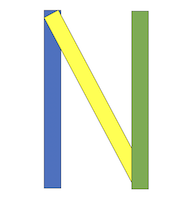Insights from 5 Experts and a Real-World Example
In the fast-evolving world of digital marketing, advertisers are constantly looking for new, engaging ways to reach their audiences. One of the most innovative and effective methods that has gained traction in recent years is native advertising. This advertising format blends seamlessly with the surrounding content, making the ads less intrusive and more likely to engage the audience. But what exactly is native advertising, and why has it become such a popular choice for marketers?
In this post, we’ll explore the native advertising definition from the perspectives of five marketing experts and provide a real-world example to help illustrate its effectiveness.
1. Terry Flynn (Professor, McMaster University)
Terry Flynn, a Professor of Marketing and Communications at McMaster University, is a thought leader on advertising ethics and digital marketing. He defines native advertising as:
“Native advertising is a paid, branded content format that matches the look, feel, and behavior of the platform on which it appears. It aims to seamlessly integrate with editorial content so that the ad appears as if it is a natural extension of the content, rather than an overtly promotional message.”
His definition underscores the importance of authenticity in native ads, highlighting the way they must blend with the platform’s content to avoid interrupting the user experience.
2. Randall H. Smith (Professor of Marketing, University of California, Berkeley)
Randall H. Smith, a professor at UC Berkeley and an expert in digital marketing and advertising, defines native advertising as:
“Native advertising is an ad format that leverages the editorial context of the platform to provide content that is relevant to users while still fulfilling a promotional objective. Unlike traditional ads, native ads are integrated into the user’s journey, appearing to come from the same source as the surrounding content.”
Smith’s definition highlights the integration of ads within the content flow and how native ads aim to align with users’ interests and content consumption patterns.
3. Joseph Turow (Professor, University of Pennsylvania)
Joseph Turow is a Professor of Communication at the University of Pennsylvania and a leading expert on media and advertising. His definition of native advertising is:
“Native advertising involves content that blends into its environment in a way that makes the promotion appear as if it is part of the content experience. It allows advertisers to capture attention by providing value, rather than being perceived as intrusive or disruptive.”
Turow’s perspective emphasizes the value-driven nature of native advertising, where the content is crafted to be inherently interesting or useful to the audience, rather than simply interrupting their experience.
4. David Ogilvy (Advertising Guru, Founder of Ogilvy & Mather)
Although David Ogilvy, the legendary advertising executive, passed away in 1999, his influence continues to shape the marketing world today. While he did not specifically define native advertising, his insights align closely with the concept. He famously said:
“The consumer isn’t a moron, she is your wife. Don’t insult her intelligence with gimmicks or tricks.”
This philosophy is key in understanding native advertising: the concept relies on the notion that consumers are savvy and should be respected with authentic, engaging content. Today’s native ads adhere to this principle by ensuring that the content is both relevant and respectful of the audience’s intelligence.
5. Michael K. Lowrey (Founder and CEO of Native Advertising Institute)
Michael K. Lowrey, a pioneer in native advertising and the Founder and CEO of the Native Advertising Institute, defines native advertising as:
“Native advertising is a marketing strategy that creates advertising content designed to fit seamlessly into the content environment in which it appears. This content is often similar in form, function, and feel to the platform’s regular content, offering a more organic and less intrusive way to engage with the audience.”
Lowrey’s definition emphasizes the seamlessness of native advertising, where the content should naturally match the format and feel of the surrounding material, allowing for greater audience engagement without disruption.
Summary of Key Points:
- Terry Flynn: Native ads should match the editorial content and integrate smoothly with the platform.
- Randall H. Smith: They align with the user’s content consumption journey without disrupting it.
- Joseph Turow: Native advertising blends value and promotion, providing relevant content to the audience.
- David Ogilvy: Emphasizes authenticity and respect for the audience, which underpins the core of native advertising.
- Michael K. Lowrey: Native advertising is seamlessly integrated into the content environment, offering organic engagement.
These definitions collectively highlight the key principles of native advertising: authenticity, relevance, integration with content, and engagement. This advertising method has become an essential tool for marketers seeking to connect with their audience in a more meaningful and non-intrusive way.
Real-World Example of Native Advertising
To bring these definitions to life, let’s look at a real-world example of effective native advertising:
Example: The New York Times and Netflix’s “The Disruptors” Series
In 2018, Netflix partnered with The New York Times to create a native advertising campaign titled “The Disruptors.” This campaign aimed to promote Netflix’s original series, “Narcos,” while educating readers about the disruptive impact of drug cartels on the global economy.
The ad was designed as a sponsored editorial piece, blending seamlessly with the rest of the content on the New York Times’ website. It provided valuable information, showcasing the complex socio-political dynamics in the context of the show. The ad didn’t feel like a typical TV show promotion—it was more of an educational article, offering insights into the broader topic, with the “Narcos” series being subtly mentioned in the context of the narrative.
This is a classic example of native advertising, where the ad provides value (educational content) while promoting a product (Netflix’s series). Because the ad matched the editorial style of the publication and was informative, it was much more likely to engage readers than a traditional banner ad or pop-up.
Why Do Marketers Use Native Advertising?
Now that we’ve explored the definition of native advertising from various experts, it’s clear that marketers use native advertising for several key reasons:
- Higher Engagement: Native ads are less intrusive and blend well with the content that users are already engaging with. This leads to higher engagement rates as users are more likely to interact with content that doesn’t feel like an ad.
- Improved Brand Trust: By offering valuable, non-disruptive content, native ads help build trust between the brand and the consumer. Users are more likely to trust and engage with ads that feel organic and helpful.
- Increased Awareness and Reach: Native advertising helps brands get in front of large, highly-targeted audiences without the risk of being ignored. As the ads match the platform’s content and style, they’re more likely to capture attention and reach the right people.
- Better Performance: Native ads often outperform traditional display ads in terms of click-through rates and conversions because they don’t interrupt the user experience and are more contextually relevant.
Understand Better Native Advertising
In summary, native advertising is a powerful tool that helps marketers deliver their messages in a subtle, engaging, and non-intrusive way. The definitions provided by experts highlight that native ads work best when they are informative, contextually relevant, and designed to blend seamlessly with the surrounding content. By leveraging native advertising, marketers can enhance engagement, build brand trust, and ultimately drive better results. Whether it’s through sponsored content, articles, or social media posts, native advertising offers a compelling way to connect with audiences in a digital landscape increasingly resistant to traditional advertising.




